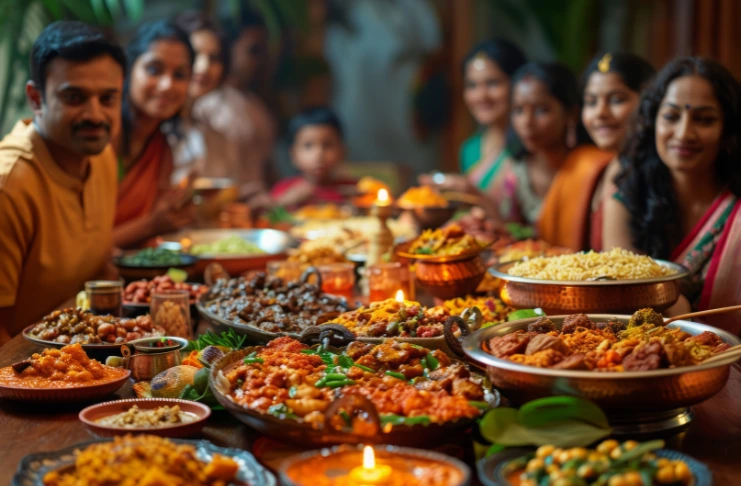The changing food habits in India have experienced a remarkable transformation over the past decade, reflecting a dynamic society that balances deep-rooted culinary traditions with the demands of a modern lifestyle. The evolution of food culture in India is marked by a growing openness to global flavors, innovative cooking techniques, and diversified dining formats that go beyond traditional home-cooked meals. This shift is not just about what people eat but also how, when, and where they choose to dine, influenced by a more connected, fast-paced, and experience-driven consumer base.
Urbanization, rising disposable incomes, and greater exposure to international cuisines have played key roles in reshaping the Indian palate, driving demand for varied food experiences across age groups and regions. Alongside this, the rise of digital technology and food delivery platforms has revolutionized dining options, making eating out or ordering in more convenient than ever. These factors have collectively fueled significant restaurant industry trends in India, influencing menu innovation, restaurant formats, and customer engagement strategies, while also encouraging sustainability and health-conscious choices.
The COVID-19 pandemic further accelerated this transformation by changing consumer priorities and behaviors, pushing restaurants to adapt rapidly to evolving health and safety expectations, including contactless service and home delivery options. Looking ahead, India dining out trends 2025 will continue to reflect these shifts, with a strong focus on convenience, health consciousness, sustainability, and personalized dining experiences driven by data and technology. Understanding these changes is essential for stakeholders aiming to thrive in one of the world’s most vibrant and fast-growing food markets.
The Traditional Foundation of Indian Food Culture
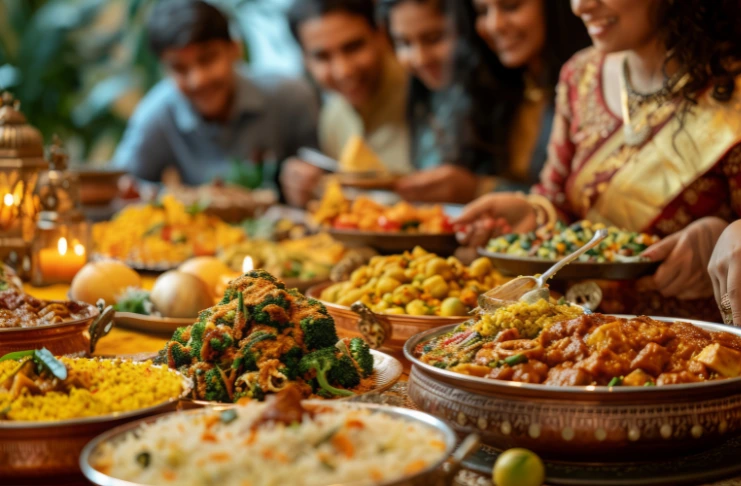
Indian food habits have always been deeply connected to culture, tradition, and the diversity found across different regions.
- Meals like the traditional thali bring together a variety of dishes that balance taste and nutrition on one plate.
- Eating together as a family was a daily ritual, with recipes passed down through generations in home kitchens.
- Religious customs encouraged vegetarianism and seasonal eating, shaping much of India’s plant-based food culture.
- Ancient wisdom, like Ayurveda, influenced how people chose ingredients based on the weather and their body’s needs.
Even today, these age-old practices continue to shape the changing food habits in India, blending tradition with new dining trends in 2025..
Modern Catalysts Driving Food Habit Changes
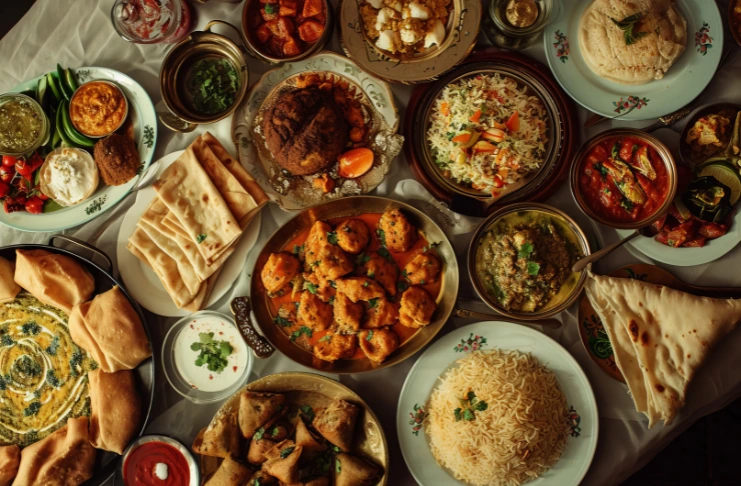
India’s rapid urbanization, digital transformation, and rising disposable incomes are reshaping food habits across the country. Changing lifestyles and technology-driven convenience are driving a shift from traditional dining to fast, accessible, and experience-focused eating, reflecting a dynamic evolution in how Indians approach food today.
Urbanization and Lifestyle Transformation
Rapid urbanization is reshaping the way Indians eat. As more people move to cities and daily life gets busier, food habits are shifting in noticeable ways:
- Traditional cooking takes a back seat to quick meals
- Joint families give way to nuclear households
- Working professionals have less time to cook
- Convenience foods and delivery services are on the rise
These changes reflect how urban living is accelerating the changing food habits in India, with speed and simplicity becoming top priorities.
Technology and Digital Integration
Technology is transforming the food scene in India, even influencing indian cooking methods. With smartphones in hand and internet access on the rise, how people order, share, and enjoy food has changed dramatically:
- Food delivery apps bring restaurant meals to doorsteps
- Social media drives food trends and visual appeal
- Digital payments make ordering and dining seamless
- Young consumers lead the shift toward tech-enabled eating
Together, these digital shifts are a major force behind the changing food habits in India, especially among the urban and tech-savvy generation.
Economic Growth and Disposable Income
India’s growing economy is changing how people eat. With more disposable income and evolving lifestyles, food choices are becoming more diverse and experience-driven:
- People are spending more on quality and convenience
- The middle class is open to global cuisines and dining out
- Urban professionals value time over cost in food decisions
- Premium food products and delivery services are gaining traction
This economic shift is a key driver behind the changing food habits in India, where food is no longer just about necessity—it’s about lifestyle and choice.
Evolution of Food Culture in India

India’s food culture is rapidly evolving, shifting from traditional home cooking to a vibrant dining-out culture enriched by global influences, growing health awareness, and regional diversity. This transformation highlights how changing lifestyles and tastes are redefining the culinary landscape across urban and semi-urban India today.
From Home Cooking to Dining Out
The evolution of food culture in India reflects a clear shift: from mostly home-cooked meals to greater dependence on eating out and external food options.
- Dining out is becoming a regular habit, not just for special occasions
- Restaurants serve as social and business hubs
- Food courts in malls and offices make eating out every day-friendly
- Convenience and socializing drive more frequent restaurant visits
This growing preference for eating out is a major factor in the changing food habits in India, especially in urban areas where lifestyles continue to evolve rapidly.
Fusion and International Influences
Exposure to international cuisines through travel, media, and global chains is expanding Indian food preferences like never before:
- Chinese, Italian, Mexican, and more are now household favorites
- Fusion dishes blend global techniques with Indian flavors
- Popular adaptations include spiced pasta, Indian-style pizzas, and continental breakfasts
- Urban consumers especially embrace these diverse food experiences
This growing global influence highlights the evolving food culture in India, where traditional tastes meet exciting new flavors.
Health Consciousness and Dietary Awareness
Growing health awareness is reshaping food habits in India, as more consumers prioritize nutrition, organic ingredients, and sustainable choices. This can be seen with:
- Increasing demand for healthy, organic, and nutrient-rich foods
- Popularity of fitness diets like keto, vegan, and gluten-free options
- Restaurants and food brands are adapting with healthier menu offerings
- Rise of health-focused food delivery services in India’s dining out trends 2025
This growing focus on wellness reflects the evolution of food culture in India, blending traditional values with modern nutritional science and restaurant industry trends in India.
Regional Cuisine Democratization
Regional cuisines in India are breaking boundaries and gaining national popularity through restaurants and food delivery platforms. This is evident in:
- South Indian dishes becoming common in Northern cities
- North Indian flavors establishing presence in Southern markets
- Food festivals and specialty restaurants promoting regional diversity
- Local food entrepreneurs scaling authentic flavors nationally
This growing cross-regional exchange is a key part of the evolving food culture in India and a significant driver of restaurant industry trends in India.
India Dining Out Trends 2025
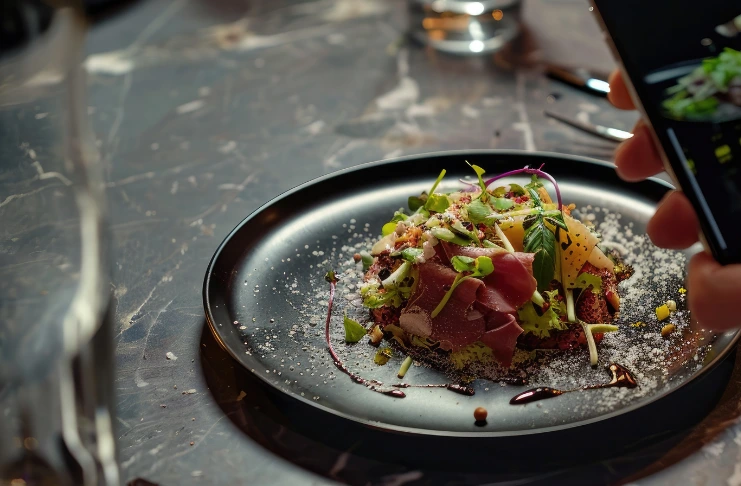
India’s dining scene is rapidly evolving in the post-pandemic era, marked by heightened hygiene standards, technology integration, and new experiential demands. Consumers increasingly seek safe, convenient, and immersive dining options, while sustainability and cloud kitchens reshape the restaurant industry landscape. These trends are pivotal in shaping India’s food habits and dining out trends in 2025.
Post-Pandemic Dining Preferences
The COVID-19 pandemic permanently changed dining habits in India, shaping new expectations and restaurant industry trends in 2025, including:
- Greater focus on hygiene and safety protocols
- Rise of contactless ordering and payments
- Increased demand for outdoor and socially distanced dining
- Hybrid models combining dine-in, delivery, and takeaway
These shifts have raised standards across the restaurant industry in India and continue to influence the evolving food habits and dining out trends in 2025.
Technology-Driven Dining Experiences
Technology is transforming restaurant dining in India, with digital tools becoming standard across the industry. This shift includes the emerging trends that are changing the landscape of dining.
- QR code menus, digital ordering, and contactless payments are basic expectations
- Emerging tech like augmented reality menus and AI-powered recommendations in premium dining
- Seamless integration of apps with restaurant operations for better order and inventory management
- Enhanced customer engagement and improved operational efficiency
These innovations are shaping restaurant industry trends in India and driving the changing food habits in India as digital convenience becomes essential for diners in 2025.
Experiential Dining Growth
Dining out in India is evolving beyond just food, as customers now seek memorable experiences that combine entertainment and interaction, reflecting broader trends in the culinary world. This shift includes:
- Theme-based restaurants and interactive dining gaining popularity
- Live cooking shows and chef meet-and-greets boosting customer engagement
- Customizable meals attracting diners willing to pay a premium
- Pop-up restaurants and food trucks offering unique, exclusive experiences
These trends are shaping the restaurant industry in India and driving the changing food habits in India, as consumers look for more than just a meal in 2025.
Sustainability and Ethical Dining
Environmental consciousness is playing a growing role in changing food habits in India, as diners increasingly prefer sustainable and responsible dining options. Key developments include:
- Restaurants adopting farm-to-table models and using organic, locally sourced ingredients
- Emphasis on waste reduction, eco-friendly packaging, and sustainable supply chains
- Sustainable practices becoming standard expectations, not just added perks
- Premium pricing supported by strong customer loyalty among eco-conscious diners
These trends are shaping restaurant industry trends in India and influencing dining out trends in 2025, reflecting a broader move toward environmentally responsible food choices.
Cloud Kitchens and Virtual Restaurants
Cloud kitchens are transforming the restaurant landscape in India, especially in urban centers where delivery demand is soaring. QSRs and cloud kitchens are projected to grow 1.4 times by 2030, surpassing the broader food-service CAGR of 11%. This evolution is marked by:
- Delivery-only kitchens cutting overhead costs without sacrificing quality
- Virtual restaurant brands offering diverse, innovative menu options
- Multi-brand cloud kitchens maximizing efficiency from a single location
- Technology-driven models enabling scalable and flexible food services
These developments are key drivers of restaurant industry trends in India and reflect the ongoing changes in food habits and dining out trends in 2025.
Restaurant Industry Trends in India
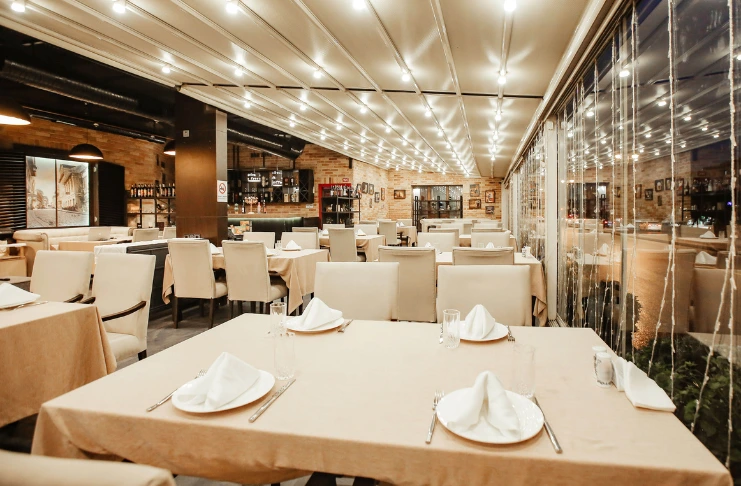
The restaurant industry is growing rapidly, fueled by urbanization, rising incomes, and evolving lifestyles across the Indian subcontinent. Expansion is spreading to smaller cities, supported by strong investments and franchise growth. At the same time, regulatory changes and workforce challenges are reshaping operations, making these factors key drivers of restaurant industry trends in India and dining out habits in 2025.
Market Expansion and Growth Patterns
The Indian restaurant industry is experiencing rapid growth, driven by urbanization, rising disposable incomes, and changing consumer lifestyles. This expansion is reshaping the dining landscape across the country. You can see this growth in:
- Both domestic and international brands are entering and aggressively expanding within the Indian market.
- Significant growth is being witnessed in Tier-2 and Tier-3 cities, opening up new and untapped markets.
- Quick Service Restaurant (QSR) chains are leading this expansion by offering standardized, affordable dining options.
- Scalable and efficient restaurant business models are being adopted widely across diverse regions, enhancing reach and profitability.
This swift expansion is a key driver of restaurant industry trends in India and will continue to influence dining preferences and habits through 2025.
Investment and Funding Landscape
Investor confidence in India’s food service sector is at an all-time high, with venture capital and private equity funding reaching record levels and supporting local farmers. This surge in investment is accelerating industry growth and technological innovation. Notable trends include:
- Increased funding is driving rapid restaurant expansion and adoption of advanced technologies.
- Food delivery platforms are evolving into comprehensive ecosystems, incorporating cloud kitchens and private labels.
- Significant capital is flowing to restaurant aggregators and food tech startups, fueling innovation across the sector.
- There is a growing emphasis on improving inventory management, customer engagement, and operational efficiency.
These investment trends are pivotal in shaping India’s restaurant industry and influencing evolving consumer food habits for the future.
Franchise and Chain Restaurant Growth
Franchise models are becoming a key driver of growth in India’s restaurant industry, enabling rapid expansion across diverse regions while maintaining quality and brand consistency. McDonald’s India (Westlife Foodworld) doubled its Q4 profit to ₹15.2 million. This approach helps both international and domestic brands reach new markets and adapt to local tastes. This transformation is reflected in:
- Successful restaurant concepts are scaling quickly through franchising, ensuring consistent experiences nationwide.
- International chains enter India via local franchise partnerships, blending global expertise with regional insights.
- Domestic brands expand aggressively by customizing offerings without losing their core identity.
- Pan-Indian restaurant brands are emerging with strong market presence across multiple states.
These franchise-driven expansions are shaping restaurant industry trends in India and influencing the changing food habits in India as the market grows.
Regulatory Environment and Compliance
Food safety and regulatory compliance have become increasingly critical in shaping the Indian restaurant industry’s growth and operational standards, as they relate to broader economic development. As the sector expands rapidly, restaurants must navigate a complex and evolving regulatory landscape to ensure customer safety and maintain trust. This development can be seen through:
- Stricter food safety regulations are prompting restaurants to invest more in compliance measures, hygiene protocols, and quality control systems to meet higher standards.
- The rollout of GST has simplified taxation processes, enhancing pricing transparency and easing financial management for restaurateurs.
- Varied local municipal regulations concerning operational permits, waste disposal, and environmental norms require restaurants to adopt flexible, region-specific compliance strategies.
- Multi-location chains face the added challenge of adapting to diverse rules across different cities while maintaining consistent service and quality.
These regulatory advancements are significantly raising the bar for operational excellence and consumer confidence, playing a key role in influencing restaurant industry trends and evolving food habits across India through 2025.
Labor Market and Workforce Trends
India’s booming restaurant sector is grappling with labor challenges that are reshaping how restaurants operate and serve customers. From staffing shortages to changing employment models, these shifts are playing a major role in how the industry adapts to evolving food habits. Key factors driving this shift include:
- Widespread labor shortages in kitchen and service roles are accelerating automation and tech adoption.
- Upskilling and professional training are essential to meet rising service and culinary standards.
- Gig economy reliance is growing, especially for delivery and flexible staffing.
- Modern staffing models include part-time, freelance, and tech-driven workforce management.
- Focus on employee well-being is improving retention and attracting skilled talent.
These labor and workforce shifts are shaping both restaurant operations and the dining experiences that define India’s evolving food culture in 2025.
Regional Variations in Changing Food Habits Across India
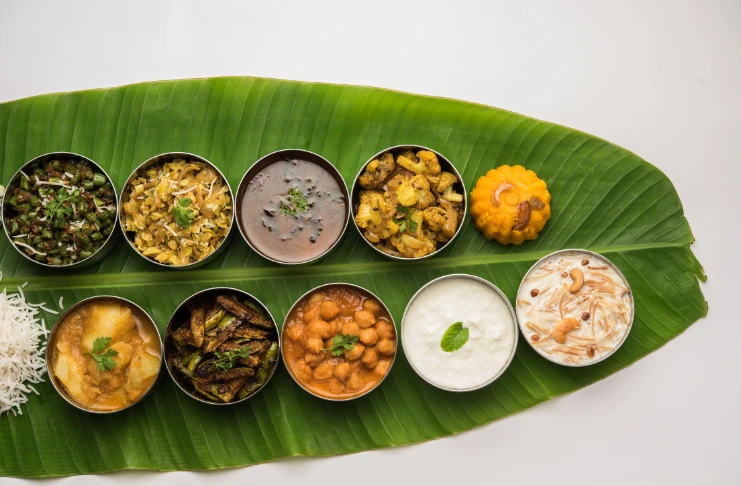
India’s evolving food habits are deeply influenced by regional preferences, cultural identities, and economic diversity. From street food stalls to high-end restaurants, each part of the country brings its own flavor to the changing dining landscape, blending tradition with modernity in unique ways.
- Traditional cuisines like Punjabi, Bengali, and South Indian continue to dominate, but there’s a growing acceptance of international, fusion, and pan-Indian menus across regions.
- Metropolitan areas such as Delhi, Mumbai, Bengaluru, and Kolkata are driving innovation, acting as testing grounds for new restaurant formats, tech integration, and global dining concepts.
- Street food culture is evolving, with regional staples like chaat, vada pav, and dosas being reimagined for premium, hygienic, and scalable formats.
- Coffee culture and café-style dining are booming across South and West India, reflecting changing social habits and the rise of casual meet-up spaces.
- Regional adaptation of global trends—such as health-conscious menus, convenience-driven formats, and digital-first ordering—is becoming more nuanced, shaped by local tastes and demographics.
As India’s food habits transform, regional markets are not just keeping pace—they’re leading the change, offering a rich tapestry of tradition and innovation that continues to redefine dining across the country.
Demographics and Consumer Behavior

Millennials, Gen-Z, working professionals, and families are driving India’s evolving food habits and influencing consumption habits, reshaping dining preferences across income groups. From social media–inspired trends and convenience to value-driven choices and experiential dining, these diverse consumer segments are fueling dynamic restaurant industry trends in India, setting the stage for continued growth and innovation in 2025.
Millennial and Gen-Z Preferences
Younger demographics are at the forefront of changing food habits in India, reshaping dining preferences and restaurant industry trends. This transformation is driven by:
- Millennials and Gen-Z prioritize convenience, variety, and unique dining experiences over traditional meals
- Strong social media influence, making Instagram-worthy dishes and trending cuisines key factors in food choices
- Greater openness to international cuisines, fusion foods, and premium dining, with novelty often valued over cost
- Adoption of subscription models like meal boxes and loyalty programs catering to their lifestyle preferences
- Brand loyalty is based more on authenticity, social responsibility, and values than on price alone
These evolving preferences among India’s youth are redefining dining out trends in 2025 and driving innovation across the food culture landscape.
Working Professional Patterns
Urban working professionals are a major force behind the changing food habits in India, shaping dining out trends and restaurant industry growth. This shift can be seen in:
- Increased reliance on external food due to limited time for cooking
- Growing demand for quick, nutritious business lunch options near office hubs
- Restaurants are becoming key venues for socializing and professional networking after work
- Expansion of corporate catering with tailored meal programs and healthy snacks
- Pandemic-driven work-from-home culture boosting premium delivery and flexible meal timings
These evolving needs of urban professionals are transforming restaurant industry trends in India and influencing how dining fits into busy lifestyles in 2025.
Family Dining Evolution
Indian families are reshaping their dining habits, turning restaurant visits into regular lifestyle choices rather than just special occasions. This change includes:
- Increased frequency of dining out driven by dual-income households and evolving family dynamics
- Restaurants catering to multi-generational groups with diverse age and dietary preferences
- Growing influence of children on family dining decisions, leading to kid-friendly menus and entertainment
- Weekend dining becoming a key social ritual for bonding and celebrations
- Expansion of celebration dining to include milestones beyond traditional events
These evolving family dining trends are important drivers of the restaurant industry in India and reflect the broader changing food habits in India in 2025.
Income-Based Consumption Patterns
Income levels play a crucial role in shaping the changing food habits in India, influencing dining preferences and restaurant industry trends. This dynamic includes:
- High-income consumers driving growth in premium dining, international cuisines, and experiential restaurant concepts
- Middle-income groups seeking value-for-money options that balance convenience and variety
- Budget-conscious diners requiring affordable yet quality meal options without compromising standards
- Varied spending patterns within income brackets, with younger consumers more willing to invest in dining experiences
- Economic factors like inflation affecting dining frequency and prompting demand for flexible pricing
Understanding these income-driven consumer behaviors is key to navigating the evolving restaurant industry trends in India.
Digital Transformation and Food Technology Revolution

Technology is reshaping India’s food service industry, revolutionizing how customers order, discover, and pay for food items. From advanced digital ordering and delivery innovations to social media-driven marketing and personalized data analytics, these technological advancements are transforming convenience, customer engagement, and operational efficiency, setting new standards for the evolving restaurant landscape in India.
Advanced Digital Ordering and Delivery Evolution
Food delivery apps have revolutionized food habits in India, transforming how consumers access restaurant meals. This transformation includes:
- Making diverse cuisines available nationwide, regardless of location or mobility
- Enhancing transparency with real-time tracking, multiple payment options, and customer reviews
- Normalizing restaurant-quality food consumption at home for daily meals
- Using AI and machine learning for personalized recommendations and operational efficiency
- Popularizing dark kitchens and cloud-only restaurants optimized for delivery
- Introducing voice-activated ordering via smart devices for a seamless customer experience
These technological advances continue to redefine modern indian cuisine, convenience, and consumer expectations across India’s evolving food landscape.
INDUSTRY INSIGHT
| According to IMARC, India’s online food-delivery market was valued at USD 45.2 bn in 2024 and is expected to surge at a 23.1% CAGR, reaching USD 320 bn by 2033. This highlights the future scope of the industry. |
Social Media Marketing and Food Discovery Revolution
Social media is reshaping and changing food habits in India by turning platforms like Instagram and Facebook into key tools for food discovery and restaurant marketing. This transformation includes:
- Visual content driving restaurant popularity more effectively than traditional ads
- Food bloggers and influencers influencing customer choices and restaurant reputations
- Viral food trends creating sudden demand spikes that restaurants must manage
- Live streaming of cooking and behind-the-scenes content fostering customer trust
- Hashtag marketing and location features building local communities and loyalty
- User-generated content campaigns turning diners into authentic brand ambassadors
These shifts highlight how digital engagement now plays a central role in the evolving Indian food culture and restaurant industry success.
Data Analytics and Personalized Customer Experiences
Customer data analytics are transforming how Indian restaurants tailor menus, manage operations, and enhance guest experiences.
- Predictive analytics help forecast demand, optimize staffing, and reduce food waste.
- Dynamic pricing algorithms adjust prices based on real-time market and ingredient trends.
- Loyalty program data enables targeted marketing and personalized retention strategies.
- Customer preference tracking guides menu development and service format adaptations.
Harnessing data-driven insights is essential for restaurants aiming to boost efficiency and create personalized, memorable dining experiences in today’s competitive Indian market.
Payment Technology and Financial Innovation
Innovative digital payment solutions are reshaping India’s dining experience by enabling fast, secure, and convenient transactions, while opening new avenues for customer engagement and loyalty.
- Contactless payments like QR codes and mobile wallets have become a hygiene-focused customer expectations, improving transaction speed and convenience.
- Integrated loyalty rewards drive repeat visits through personalized offers based on spending patterns.
- Flexible options like buy-now-pay-later appeal to younger diners, broadening access to premium dining.
- Emerging methods such as cryptocurrency acceptance and split payment apps reduce friction, encouraging larger group visits and attracting tech-savvy consumers.
By adopting diverse payment methods, restaurants improve customer satisfaction and gain valuable insights for better marketing and operations.
Health and Wellness Revolution in Indian Dining

Health and wellness are reshaping India’s food culture, driving a strong demand for nutritious, sustainable, and personalized dining options, like some Indian breads with extra health benefits. From organic and specialized diets to the integration of traditional wellness practices like Ayurveda, restaurants are evolving to meet the needs of increasingly conscious consumers seeking balanced, flavorful, and health-supportive meals.
Nutritional Awareness and Conscious Eating
Health and wellness are increasingly influencing Indian dining, with consumers seeking nutritious, sustainable, and customized meals that support active lifestyles and dietary needs.
- Demand for protein-rich, low-carb, and superfood dishes reflects growing fitness and health awareness without sacrificing flavor or convenience.
- Organic and farm-to-table ingredients attract eco-conscious diners prioritizing transparency and quality.
- Vegan, gluten-free, keto, and other specialized diets have become standard menu features, capturing diverse health-focused customers.
- Traditional wellness elements like Ayurveda and immunity-boosting ingredients are being creatively integrated into modern menus.
Restaurants blending health, sustainability, and cultural authenticity can successfully attract India’s growing cohort of mindful consumers.
Organic and Sustainable Food Movement
Organic and natural food trends are gaining momentum among health-conscious urban consumers in India, who are increasingly willing to pay premium prices for food prepared without chemicals and artificial additives. This shift reflects a growing awareness of long-term health impacts and environmental concerns linked to conventional food production.
- Demand for certified organic ingredients and chemical-free preparation methods is rising sharply, especially among urban diners prioritizing health and wellness.
- Farm-to-table models and locally sourced produce have become key differentiators, with restaurants building direct relationships with organic farmers and tailoring menus to seasonal availability.
- Emphasis on clean eating drives restaurants to focus on minimally processed foods in this ultra-processed food era, simple ingredient lists, traditional cooking methods, and transparency in food preparation.
- Sustainability and ethical sourcing matter more than ever, pushing restaurants to highlight their responsible supply chains and environmental efforts to attract eco-conscious customers.
- The organic movement extends beyond food, influencing beverage menus to include organic teas, cold-pressed juices, and naturally fermented drinks that appeal to health-focused consumers.
This growing organic and sustainable food trend is reshaping Indian dining, pushing restaurants to innovate while meeting consumer demand for healthier, ethically sourced options that align with modern wellness values.
Specialized Dietary Accommodations and Medical Nutrition
Dietary diversity is now a standard expectation in India’s restaurants, with vegetarian, vegan, gluten-free, and keto options widely available. This shift reflects growing health, ethical, and religious considerations, pushing restaurants to master specialized cooking techniques and ingredient alternatives.
- Restaurants focusing on specific diets have tapped into profitable niches, often becoming community hubs for diners who share similar dietary preferences and value quality food paired with a supportive atmosphere.
- Menus now increasingly cater to medical dietary needs, with many restaurants collaborating with nutritionists to craft dishes suitable for diabetes, heart health, and weight management, balancing nutrition and flavor.
- Rising food allergies and intolerances have led to rigorous cross-contamination controls and broad allergen-free offerings, helping restaurants build trust and attract health-conscious clientele.
- Personalized nutrition is gaining ground, with some restaurants allowing customers to customize meals by adjusting ingredients, portion sizes, and preparation methods to meet individual health goals.
This expanding focus on specialized and personalized diets is driving innovation in India’s restaurant industry, allowing eateries to cater to diverse health needs while fostering loyal, health-aware customer communities.
Integration of Traditional Wellness Wisdom
Restaurants are increasingly incorporating foods with specific health benefits—such as immunity boosters, digestive aids, and anti-inflammatory ingredients—to attract health-conscious diners. The COVID-19 pandemic notably heightened consumer interest in immunity-supporting foods and drinks.
- Traditional Indian medicinal ingredients like turmeric, ginger, and holy basil are gaining prominence in modern menus, blending ancient wisdom with contemporary health trends.
- Ayurvedic principles are shaping menu design, with some restaurants categorizing dishes to help customers select foods aligned with their body type and wellness needs.
- The ancient concept of food as medicine is seeing a revival, as eateries offer therapeutic dishes aimed at addressing health concerns and enhancing overall well-being.
- Seasonal eating based on traditional Indian knowledge is making a comeback, with menus evolving to reflect the availability and health benefits of foods suited to different times of the year.
This fusion of traditional health wisdom with modern dining is redefining wellness-focused food culture in India’s restaurant scene, creating meaningful, health-supportive experiences for consumers.
Economic Factors Influencing Food Choices

Economic factors are significantly shaping India’s restaurant industry, influencing consumer behavior, pricing strategies, and business growth. From rising inflation and income disparities to government policies and investment availability, understanding these financial dynamics is crucial for restaurants aiming to navigate market challenges and seize opportunities for sustainable success.
Inflation and Food Price Sensitivity
Rising food inflation is reshaping how consumers make dining decisions, especially among price-sensitive customers who often reduce restaurant visits or opt for more affordable menu items during tougher economic times.
- Restaurants face the challenge of managing increased ingredient costs while staying competitively priced, often resulting in careful menu optimization and portion control to maintain profitability.
- Offering value meals and targeted promotions has become crucial for retaining customer loyalty when inflation pressures limit discretionary spending.
- Strategic pricing adjustments help restaurants stay attractive without compromising quality, ensuring they can weather economic fluctuations while meeting evolving consumer expectations.
Effectively navigating inflationary pressures allows restaurants to sustain customer engagement and profitability, which is critical for the indian economy, even amid uncertain economic environments.
Income Disparity and Market Segmentation
Income disparities across Indian markets demand that restaurants strategically position their offerings to cater to distinct customer segments while ensuring sustainable profitability.
- The premium dining segment is expanding rapidly among affluent consumers who seek exclusive experiences and high-quality ingredients.
- Budget dining remains essential for price-sensitive customers, requiring affordable menus without compromising on food safety and quality.
- The middle-income group presents the biggest growth potential, needing value-driven options that balance quality, variety, and cost to capture this broad demographic.
By tailoring offerings to these diverse income segments, restaurants can optimize market reach and maximize growth opportunities.
Economic Policy Impacts
Government policies play a crucial role in shaping the restaurant industry, impacting everything from taxation to licensing and operational frameworks, which in turn affect pricing and business strategies.
- Taxation and licensing regulations can increase operational costs and complexity, requiring restaurants to adapt their business models accordingly.
- Infrastructure improvements, especially in transportation and logistics, enhance supply chain efficiency and delivery reliability, directly influencing customer satisfaction and cost management.
- Employment laws and labor regulations determine staffing costs and service delivery approaches, affecting profitability and scalability within the sector.
Understanding and navigating these policy factors is essential for restaurants to maintain compliance, control costs, and sustain growth in a competitive market.
Investment and Capital Availability
Access to investment capital is a key driver of growth and innovation in the restaurant industry, enabling businesses to expand, adopt new technologies, and enhance operational efficiency.
- Availability of funding allows restaurants to upgrade infrastructure, implement cutting-edge technology, and improve service quality, directly benefiting the customer experience.
- Increased venture capital investment in food tech and restaurant chains is fueling rapid innovation, leading to new business models and market expansion.
- Economic fluctuations influence consumer spending patterns, creating cycles of growth and contraction that impact restaurant revenues and strategic planning.
Securing the right financial resources is vital for restaurants to stay competitive and capitalize on emerging opportunities in a dynamic market environment.
Future Predictions and Industry Outlook

As the Indian restaurant industry moves toward 2025, innovation, sustainability, and evolving consumer expectations are becoming central to success. From AI-driven automation and immersive tech to climate-conscious operations and hyper-personalized dining, restaurants must adapt to stay competitive. These shifts mark a new era of dining defined by efficiency, responsibility, and deeply individualized customer experiences.
Technology Integration and Automation Advancement
Artificial intelligence and machine learning are transforming restaurant operations by optimizing inventory, predicting demand, personalizing recommendations, and automating food preparation. These technologies improve efficiency and enhance the dining experience.
- Virtual and augmented reality will offer immersive dining with virtual tours, interactive menus, and themed environments.
- Robotics and automation will address labor shortages and ensure consistent food quality, especially in quick service and cloud kitchens.
- IoT sensors will track food temperature, inventory, and energy use in real time, reducing waste and boosting food safety.
- Blockchain will enhance supply chain transparency, allowing restaurants to verify ingredient origins and share meal journey details with customers.
These innovations will reshape dining, making restaurants more efficient and customer-focused.
Sustainability and Environmental Responsibility Imperatives
Environmental awareness is transforming restaurant operations, making sustainability a critical factor in sourcing, waste management, packaging, and energy use. Climate change concerns now compel restaurants to adopt eco-friendly practices as a core business priority.
- Circular economy models emphasize local sourcing, waste reduction, and sustainable supply chains, requiring restaurants to show measurable environmental impact improvements.
- Reducing carbon footprints will become a key selling point, with carbon-neutral and carbon-negative restaurants emerging as premium options.
- Growing consumer demand for plant-based and alternative proteins will push restaurants to master sustainable menu options.
- Zero-waste concepts will rise, combining efficiency with strong marketing appeal by eliminating waste and optimizing resources.
Sustainability is no longer optional but essential for competitive success in today’s eco-conscious market.
Market Evolution and Consumer Behavior Shifts
Convenience is becoming the top priority in food service, with customers valuing not only speed but also customization, dietary options, and seamless digital integration to fit busy lifestyles.
- Experiential dining is rising as customers seek memorable, shareable moments that justify premium prices and boost social media engagement.
- Health-conscious choices and transparent nutrition are now expected, making wellness integration standard across all restaurant types.
- Advanced personalization, powered by AI and data, tailors dining experiences to individual preferences, restrictions, and moods, setting brands apart.
- Community-focused dining spaces are emerging to counteract digital isolation, offering social hubs that foster real human connections.
Together, these trends are reshaping the future of dining, pushing restaurants to innovate continuously while meeting the evolving needs of today’s diverse and discerning customers.
Conclusion
The changing food habits in India have set the stage for an exciting future in the country’s dining landscape. As highlighted earlier, the evolution of food culture in India is a blend of tradition and modernity—where age-old culinary values coexist with new global influences and lifestyle changes. This ongoing transformation will continue shaping India dining out trends 2025, driving innovation and diversity in the restaurant industry.
Restaurants that successfully balance authenticity with convenience, health, and personalization will lead the way in meeting the demands of today’s discerning consumers. The growth of digital integration, sustainable practices, and experiential dining is not just a trend but a necessary adaptation for staying relevant in this competitive market. The restaurant industry trends in India point to a future where customer expectations go beyond taste and price—they now demand transparency, wellness, and meaningful experiences.
This shift also opens opportunities for restaurateurs and food entrepreneurs to innovate while respecting the cultural roots that make Indian cuisine unique. As consumers increasingly seek connections—whether to heritage, community, or personal health—the food service sector must evolve thoughtfully and creatively. Ultimately, the changing food habits in India reflect a vibrant food culture that honors its rich past while eagerly embracing the future, making India’s dining scene one of the most dynamic and promising markets globally.
Frequently Asked Questions
1. What is the outlook for restaurants in 2025?
The outlook for restaurants in 2025 is optimistic, driven by evolving consumer preferences, technology adoption, and a growing emphasis on health and sustainability.
2. What is the trend in the food market in India?
The trend in the food market in India is dynamic, characterized by rising demand for convenience, health-conscious options, and fusion of traditional and global cuisines.
3. What are the food trends in 2030?
Food trends in 2030 will focus on sustainability, personalized nutrition, plant-based diets, and tech-driven dining experiences.
4. What is the eating style in India?
Eating style in India is diverse and regionally varied, influenced by cultural, religious, and climatic factors.
5. What is the history of food culture in India?
The history of food culture in India is rich and ancient, deeply rooted in tradition, religion, and regional diversity.
6. How did Indian food evolve?
Indian food evolved through centuries of cultural exchanges, trade, invasions, and indigenous innovation, creating a diverse culinary heritage.
7. What is the relationship between culture and food in India?
Culture and food in India are intricately linked, with food serving as an expression of religious beliefs, social customs, and regional identities.
8. What is the progress of the food processing industry in India?
The food processing industry in India has seen significant growth, driven by government support, rising consumer demand, and technological advancements.
9. What is the future of the restaurant industry in India?
The future of the restaurant industry in India is promising, with innovation, digitalization, and evolving consumer trends shaping sustained growth.
10. What is the trend in the food industry in India?
The trend in the food industry in India is rapidly evolving, focusing on health, sustainability, convenience, and fusion cuisines.
11. What is the success rate of restaurants in India?
The success rate of restaurants in India is moderate, with challenges like competition, operational costs, and changing consumer preferences impacting sustainability.


